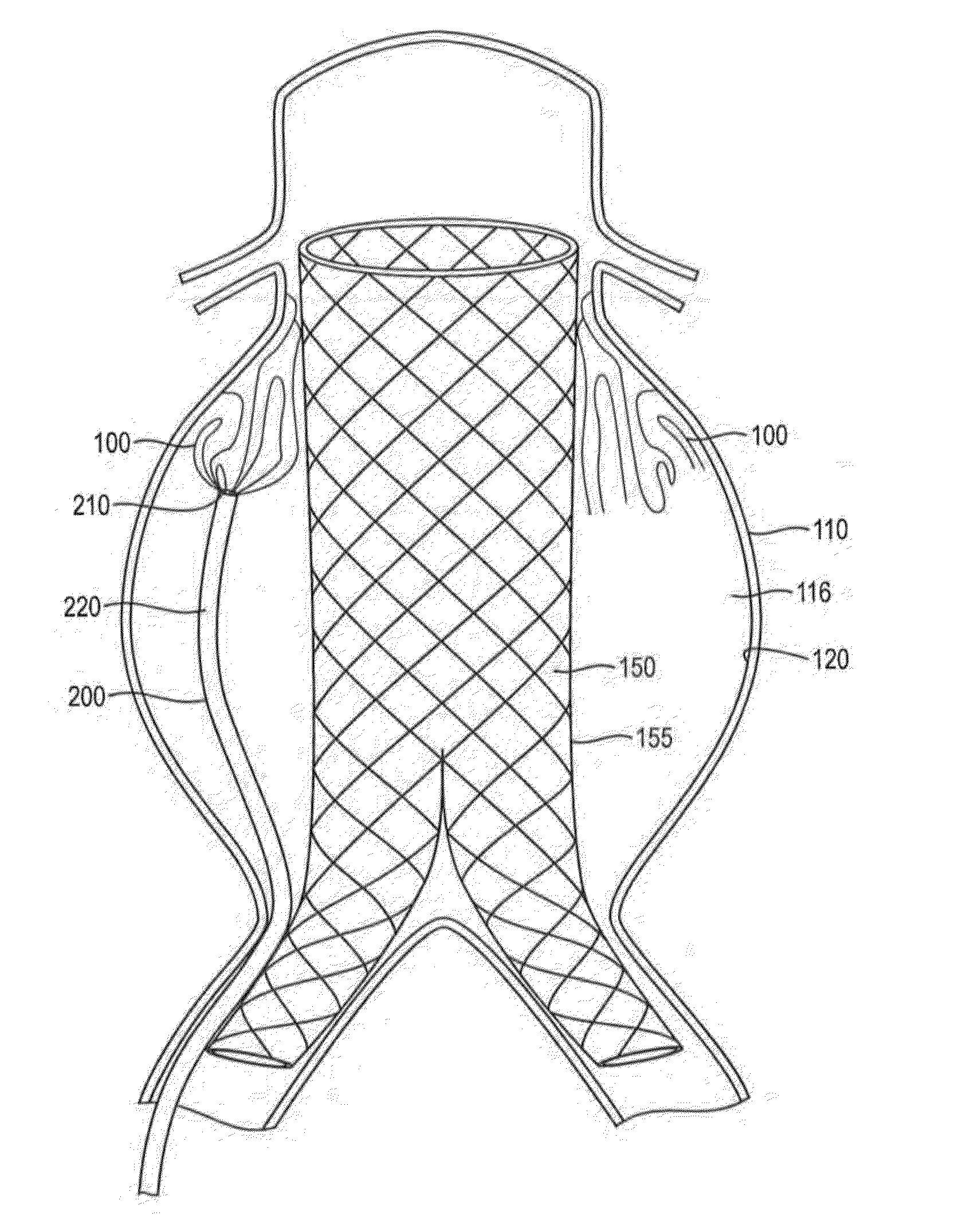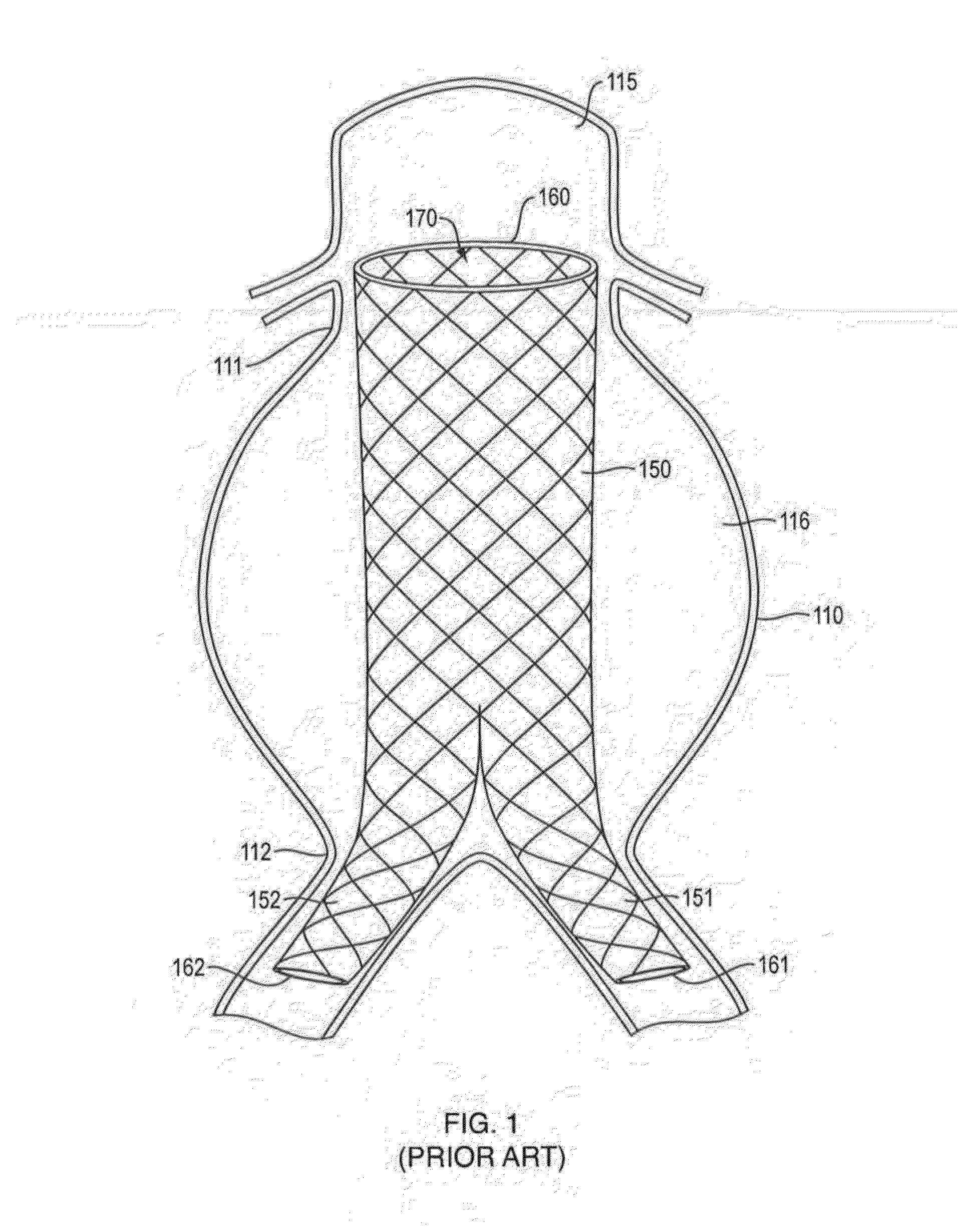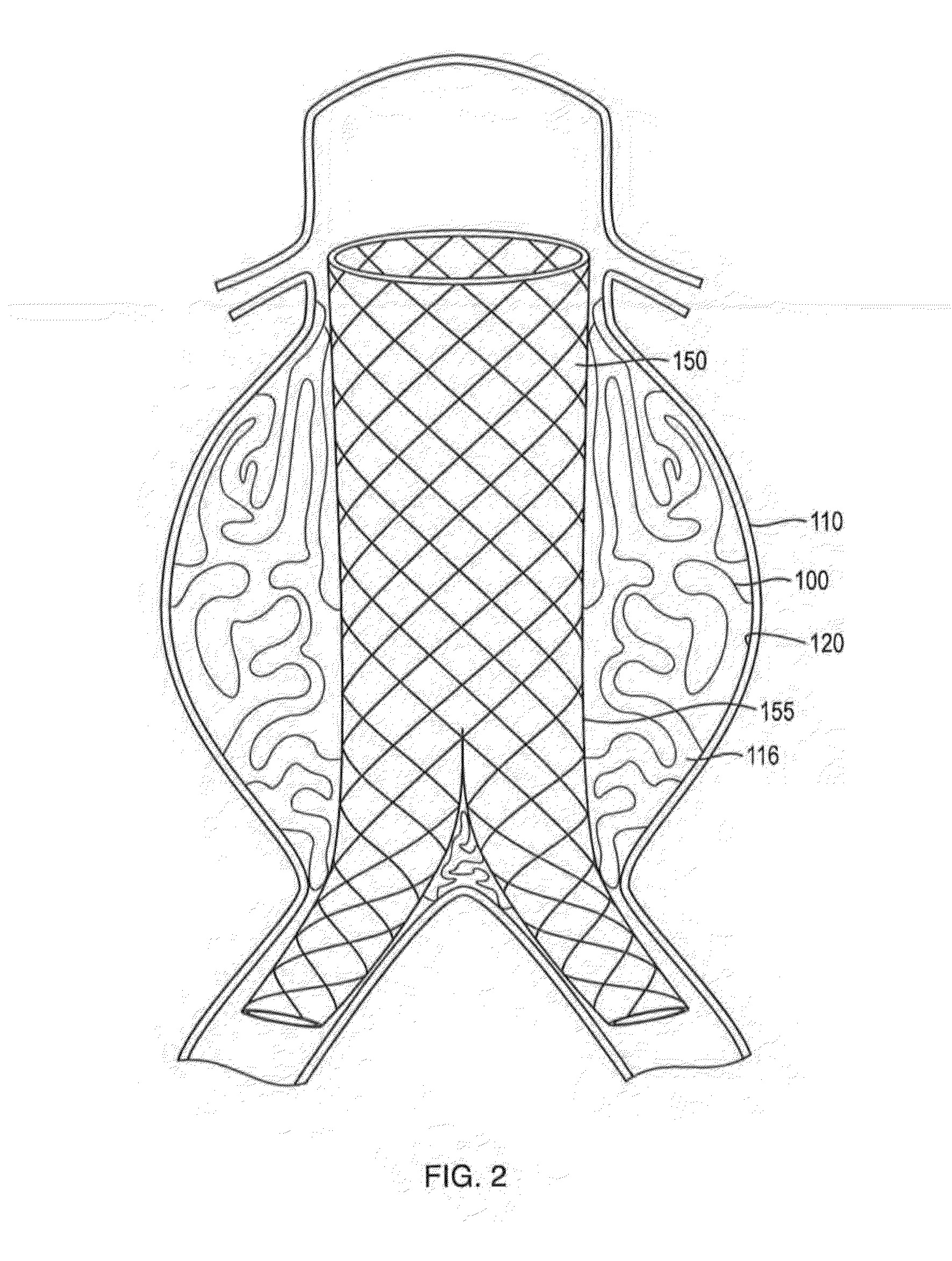In-situ Forming foams with outer layer
a foam and outer layer technology, applied in the field of polymer foams, can solve the problems of limiting efficacy, morbidity or mortality, internal bleeding which is often fatal, etc., and achieves the effects of promoting material cohesion, resisting deformation and movement, and hardening more slowly
- Summary
- Abstract
- Description
- Claims
- Application Information
AI Technical Summary
Benefits of technology
Problems solved by technology
Method used
Image
Examples
example 1
[0109]A plastic cap was used to simulate an aneurysm with two 4 mm ID lumbar arteries (bottom) and one 6 mm ID IMA (top). Additionally, the model was operated under a static bead of fluid pressure such that a flow rate of 40 ml / min out of the IMA and into the lumbar arteries was maintained. The material was delivered in <5 minutes to fill the 40 ml aneurysm via a 1.8 mm ID blunt tip.
[0110]During and after the delivery the material remained cohesive and remained in the target location, without embolizing the model collateral vessels. Within minutes after delivery was completed the material solidified in the interior and foamed forming a robust elastic foam.
example 2
[0111]In this example, a in-situ forming foam demonstrated beneficial performance in an anatomically correct model. An anatomically correct model of a large human aortic aneurysm was made of molded silicone. The model had an aneurysm volume of 285 ml and a complex geometry. A bifurcated sent graft (36×20 mm) with a 16 mm extension was deployed in the model prior to injection of the material into the space between the grab and the aneurysm wall The formulation delivered via a 4 mm catheter effectively filled 90% of the space between the graft and the model without compromising the proximal or distal seal zones. The skin of the formulation impinged upon the graft but did not affect the diameter of the stent graft lumens and stayed within the aneurysm space without migrating into the collateral vessels. The formulation formed an elastic foam within minutes after deployment. This example demonstrates the benefits of lava-like foam characteristics in effectively and selectively filling a...
example 3
[0112]In this example, an isocyanate prepolymer formulation was coated with a siloxane based formulation and delivered through a coaxial delivery catheter. The two streams were not coaxial, but were attached to each other and delivered in parallel.
PUM
| Property | Measurement | Unit |
|---|---|---|
| bulk modulus | aaaaa | aaaaa |
| bulk modulus | aaaaa | aaaaa |
| pore size | aaaaa | aaaaa |
Abstract
Description
Claims
Application Information
 Login to View More
Login to View More - R&D
- Intellectual Property
- Life Sciences
- Materials
- Tech Scout
- Unparalleled Data Quality
- Higher Quality Content
- 60% Fewer Hallucinations
Browse by: Latest US Patents, China's latest patents, Technical Efficacy Thesaurus, Application Domain, Technology Topic, Popular Technical Reports.
© 2025 PatSnap. All rights reserved.Legal|Privacy policy|Modern Slavery Act Transparency Statement|Sitemap|About US| Contact US: help@patsnap.com



